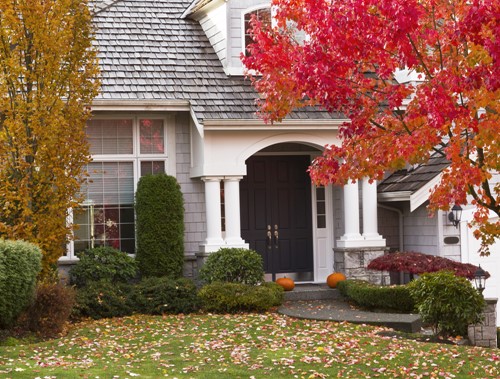Email: [email protected]

Image by Tom from Shutterstock
Energy efficiency isn’t just for the inside of your home. What you plant outside can affect the bottom line inside. Choosing the right trees, grasses, and shrubs can help.
Well placed trees can help to reduce your heating and cooling bills. Trees can keep your home cooler in the summer and protected and insulated in the winter. Determine where to plant the saplings so that when they mature, they shade your roof and upper rooms. Plant leafy deciduous trees to the East, West, or South sides of your home so that the shadows fall on your house. Eventually, they’ll keep you shaded in the blistering summer months. In the winter, those trees will lose their leaves allowing warmth from the sun to reach your windows through the bare branches.
When planting trees on the north or northwest side of your house, utilize evergreens as a windbreak. They’ll reduce the amount of frigid air that hits your house in the winter. Strategically planted rows can create a windbreak for an entire side of your home. Cypress, fir, or low-branch pines create great windbreaks. Be sure to account for growth when you choose a planting location, 10 to 15 feet between each tree is a good place to start.
If you have central air conditioning, use shrubs and bushes to shade your condensing unit. Experts estimate that a protected A/C can boost efficiency by ten percent or more. Keep your plants and shrubs about three feet away from your condensing unit so that it has proper airflow. Trim trailing vines or branches that grow close to the equipment or ventilation.
Replace grass with stones or a concrete slab that reflects light and heat toward your home. That will keep your home warmer in the winter months. Dark wood chips, mulch, or green groundcover help to absorb daytime heat that is then slowly released throughout the evening and overnight. This process works to keep your home cooler during the day but adds warmth to outdoor entertainment spaces in the evening.
If you’re searching for the perfect new house, let your real estate professional know about your desire for energy efficiency. They can help you find the ideal home to put your ideas into action.

You don’t need to do this alone. I am bilingual in English and Spanish, and I have been in the industry for over 20 years, after earning my degree in Business Management and successive studies in Human Resources and Technology. Never content to let my education lapse, I also received a certification in Negotiation Skills from Pepperdine University and attended courses at Stanford University. A leader in the field, I am a member of the Santa Clara Board of Realtors and served as a professional standards ombudsman for 8 years. I completed a term as the President of the National Hispanic Organization of Real Estate’s Santa Clara chapter in 2016, now serving as this organization’s National Vice President. I pursued additional in-depth training to achieve professional designations as an ABR (Accredited Buyer’s Representative), CRS (Certified Professional Specialist), and SRES (Seniors Real Estate Specialist), GREEN certification, and RCS-D (Divorce Real Estate Specialist). Far from being a meaningless alphabet soup, this demonstrates how proactive I am in pursuing the latest knowledge so that I completely prepared to satisfy all my sellers' and buyers' unique needs. I am committed to Excellence!